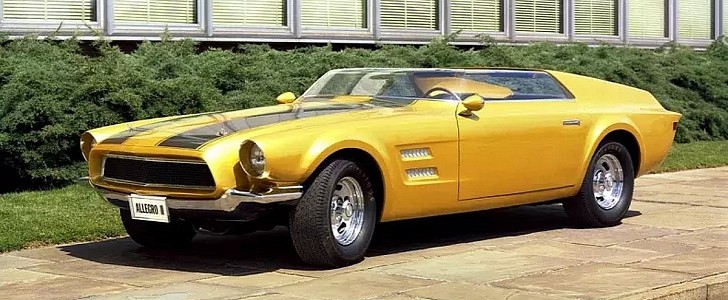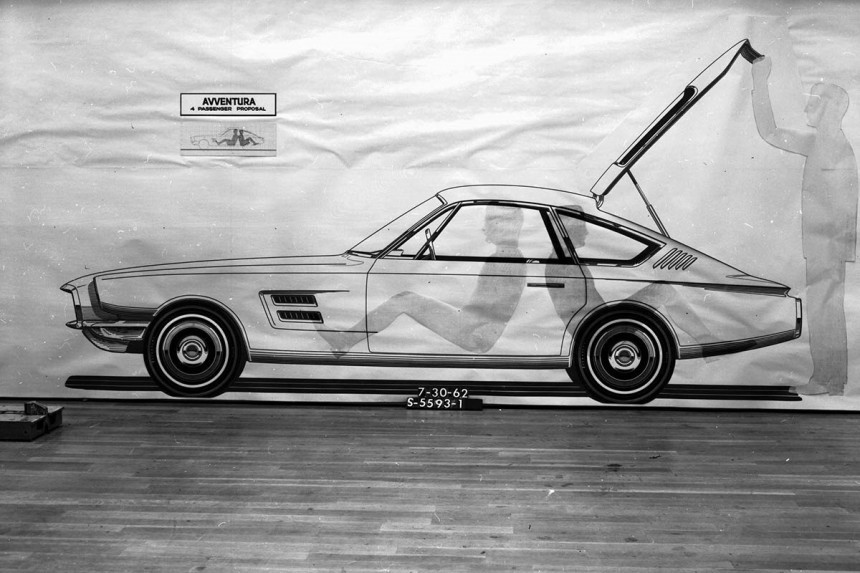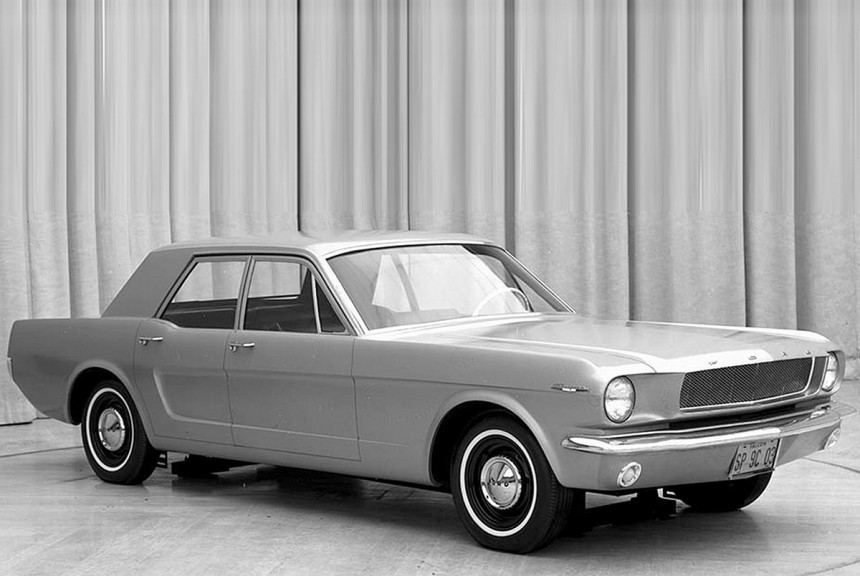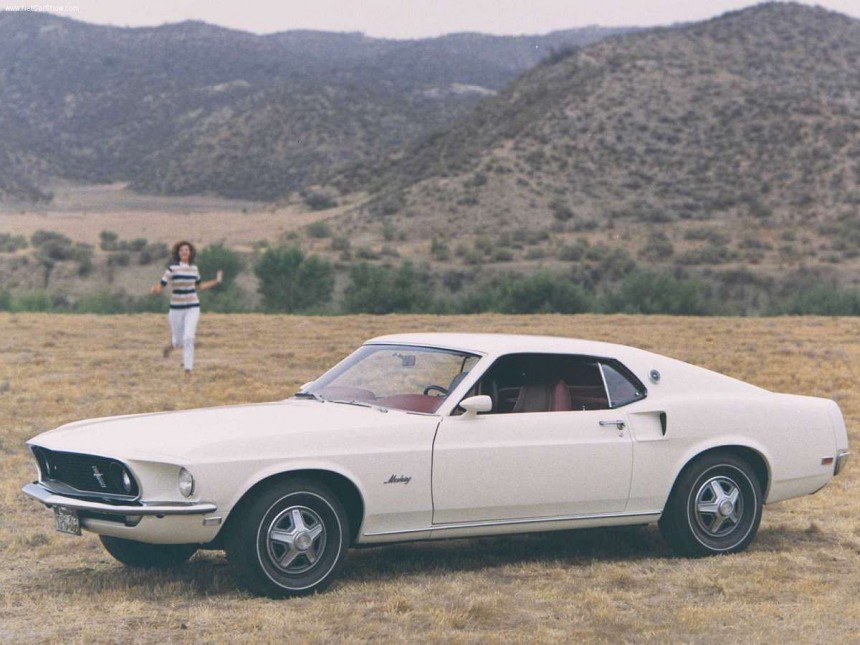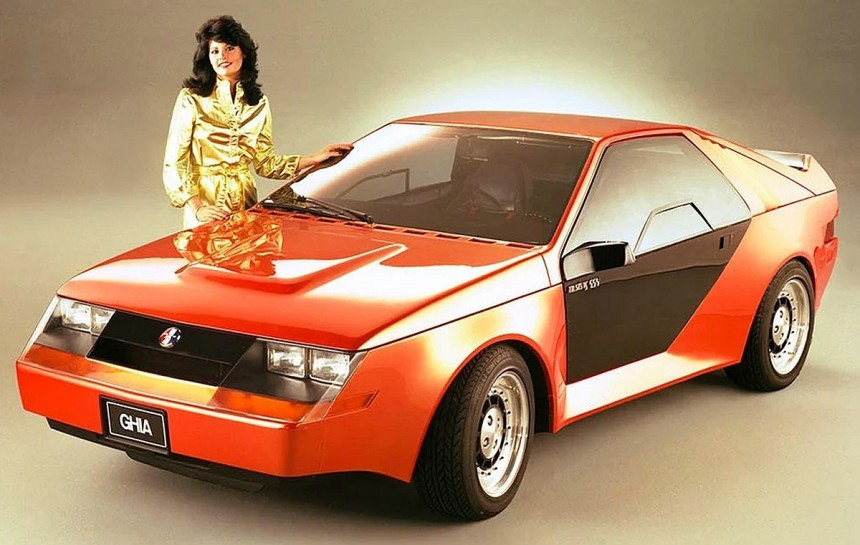An American icon and Ford's longest-running nameplate, the Mustang had quite a few ups and downs over the six generations produced as of 2021. It also spawned numerous concept cars and prototypes, as well as a few not-so-famous production versions. Here we discuss five Mustangs you might not have heard of.
1961 Avventura concept
The Avventura concept didn't wear a Mustang badge, but it was part of the project that led to the final design of the iconic pony. Right after Ford unveiled the Mustang I concept to the world in 1961, the company's designers penned various coupe bodies to bolt on the first-generation Falcon. A sleek fastback with a long front hood a big hatch, the Avventura did not go past the drawing stage.
However, it pioneered some of the styling cues that later appeared on the first-gen Mustang, including the round headlamps flanking a forward slanted nose and the character lines on the sides. The Avventura was also designed with an unusual rear-facing rear seat.
The Avventura was further developed in 1962 and renamed the Avanti. Unlike its predecessor, the Avanti became a real-size car. Ford dropped the rear-facing seats from this design. In 1963, the concept was refined further and renamed the Allegro. This prototype had a clear influence on the 1965 Mustang's roof design. Ford built two of them, one of which was featured in a Mustang promotional film.
Designed by Dave Ash and brought to life as a full-size clay model, the four-door Mustang was not considered for production and never became a functional concept. But it influenced the design of the third-generation Ford Falcon, which went into production for the 1966 model year.
The Allegro II concept was probably Ford's attempt to design a competitor for the Chevrolet Corvette Grand Sport, which Zora-Arkus Duntov had introduced for the 1963 racing season. But Ford didn't go on with the project, so the Allegro II remained just a prototype. And a really ugly one, I might add.
The Mustang E was powered by a 4.1-liter inline-six, the smallest unit available for the nameplate in 1969. But unlike the regular Thriftpower mill, it featured a specially-tuned carburetor, a high-stall torque converter, and a rear axle with 2.33:1 gearing. Ford also did not offer the optional air conditioning on this model.
The Mustang reportedly returned 19 mpg (12.4 liters per 100 km) on the highway, almost three mpg more than the regular six-cylinder Mustang. In city conditions, mileage increased from 12.9 to 13.7 mpg (17.1 liters per 100 km). But the economy-minded drivetrain also made the E awfully slow from 0 to 60 mph (96 kph), needing 13.3 seconds to reach the benchmark.
The Mobil Economy Run was canceled in 1969, but Ford went ahead and sold the Mustang E to the public. The economy pony was far from popular, so Ford reportedly built only 96 examples. One of the rarest 'Stangs ever produced can be recognized by the "E" badges on the rear fenders.
Nearly 6 inches (152 mm) shorter than the production Mustang, the RSX featured a two-seat layout, all-glass doors, and a rear airfoil for improved aerodynamics and stability at high speeds. But while it looked radically different from the Fox-body Mustang, it shared the familiar 2.3-liter four-cylinder engine, paired to a four-speed manual gearbox.
Sadly, the RSX wasn't developed into a WRC-spec rally car, and Ford continued to race modified Escorts until it pulled out of the sport in 1983. Ford returned in 1986 with the RS200, a full-fledged Group B rally car.
The Avventura concept didn't wear a Mustang badge, but it was part of the project that led to the final design of the iconic pony. Right after Ford unveiled the Mustang I concept to the world in 1961, the company's designers penned various coupe bodies to bolt on the first-generation Falcon. A sleek fastback with a long front hood a big hatch, the Avventura did not go past the drawing stage.
However, it pioneered some of the styling cues that later appeared on the first-gen Mustang, including the round headlamps flanking a forward slanted nose and the character lines on the sides. The Avventura was also designed with an unusual rear-facing rear seat.
The Avventura was further developed in 1962 and renamed the Avanti. Unlike its predecessor, the Avanti became a real-size car. Ford dropped the rear-facing seats from this design. In 1963, the concept was refined further and renamed the Allegro. This prototype had a clear influence on the 1965 Mustang's roof design. Ford built two of them, one of which was featured in a Mustang promotional film.
1964 four-door Mustang
As soon as the first-gen Mustang went into production in 1964, Ford started toying around with new body styles. One of them was a four-door variant of pony. Unlike the two-seat version that Ford had been pondering for years, the four-door was a full-fledged hard-top version of the 'Stang with a longer wheelbase and an extra pair of doors, and wider C-pillars.Designed by Dave Ash and brought to life as a full-size clay model, the four-door Mustang was not considered for production and never became a functional concept. But it influenced the design of the third-generation Ford Falcon, which went into production for the 1966 model year.
1967 Mustang Allegro II concept
In 1967, Ford decided to take the old Allegro concept and turn it into a race-inspired design. Ford chopped the roof off and added a speedster-style windshield with wrap-around glass for the doors and a pair of flying buttresses behind the seats. It also rode on bigger wheels and beefier tires, which were more common on American road racing cars back in the day.The Allegro II concept was probably Ford's attempt to design a competitor for the Chevrolet Corvette Grand Sport, which Zora-Arkus Duntov had introduced for the 1963 racing season. But Ford didn't go on with the project, so the Allegro II remained just a prototype. And a really ugly one, I might add.
1969 Ford Mustang E
The only production car on this list, the Mustang E was Ford's idea of a more fuel-efficient pony car. Introduced in 1969, Ford originally wanted to enter it in the Mobil Economy Run, an event created to provide real fuel efficiency numbers during a coast-to-coast test on public roads with regular traffic and weather conditions.The Mustang E was powered by a 4.1-liter inline-six, the smallest unit available for the nameplate in 1969. But unlike the regular Thriftpower mill, it featured a specially-tuned carburetor, a high-stall torque converter, and a rear axle with 2.33:1 gearing. Ford also did not offer the optional air conditioning on this model.
The Mobil Economy Run was canceled in 1969, but Ford went ahead and sold the Mustang E to the public. The economy pony was far from popular, so Ford reportedly built only 96 examples. One of the rarest 'Stangs ever produced can be recognized by the "E" badges on the rear fenders.
1980 Mustang RSX
Rally racing was gaining massive traction in Europe in the early 1980s, and Ford wanted a piece of the action too. The RSX, short for Rallye Sport Experimental, was born out of that desire. Based on the Fox-body third-generation Mustang, the RSX was designed by Ford's Ghia studio in Turin, Italy.Sadly, the RSX wasn't developed into a WRC-spec rally car, and Ford continued to race modified Escorts until it pulled out of the sport in 1983. Ford returned in 1986 with the RS200, a full-fledged Group B rally car.
